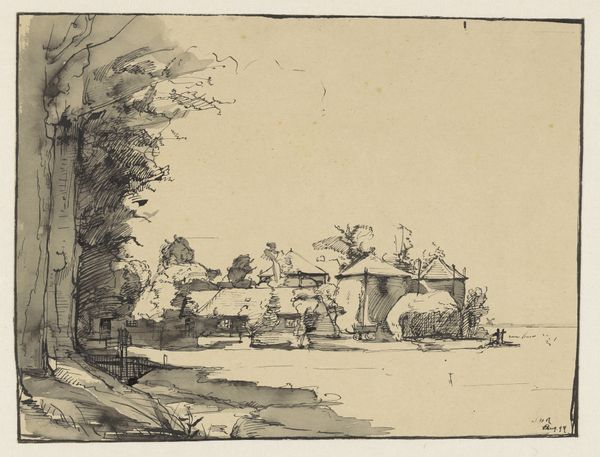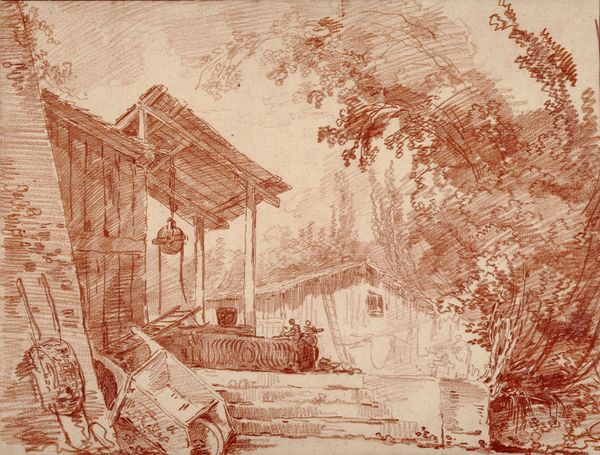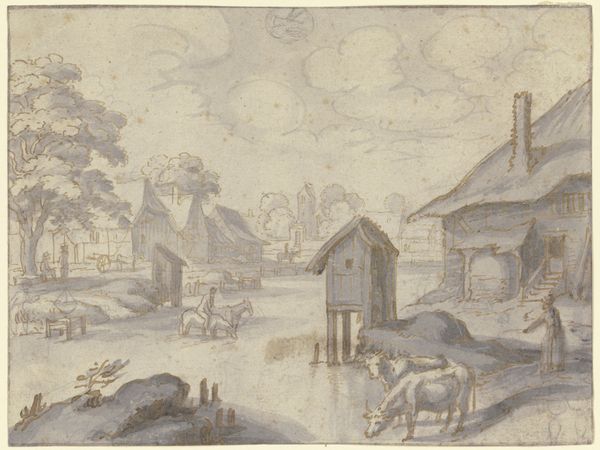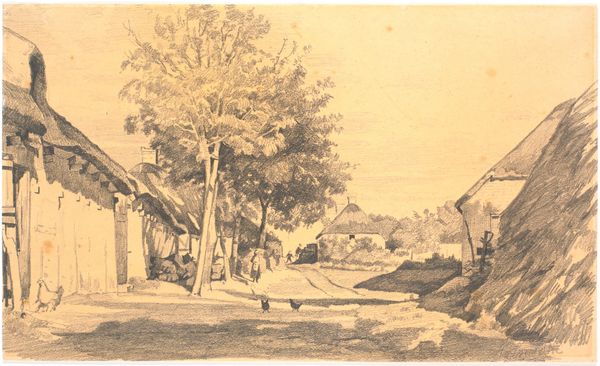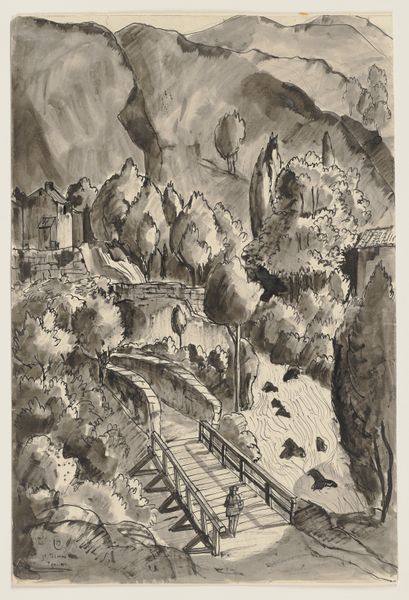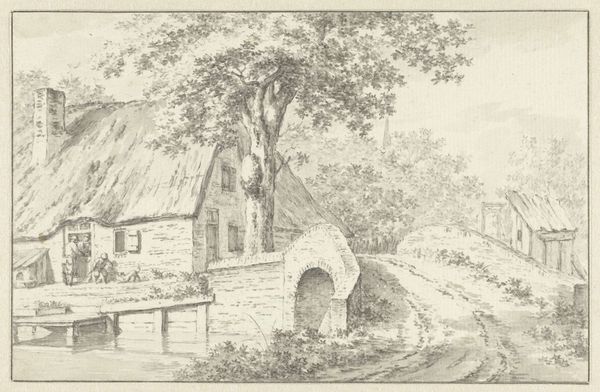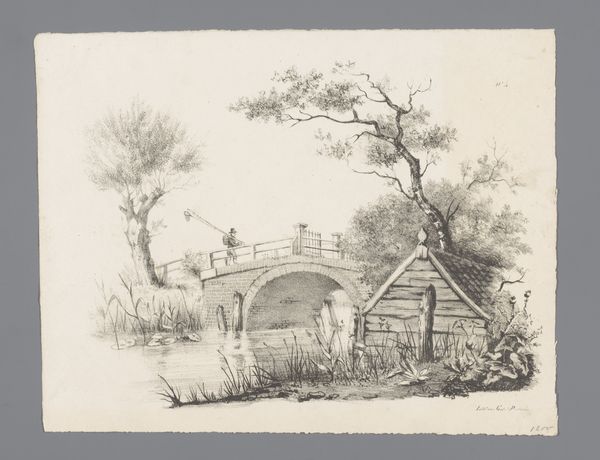
drawing, paper, watercolor, ink
#
drawing
#
landscape
#
etching
#
paper
#
watercolor
#
ink
#
romanticism
#
genre-painting
#
watercolor
Dimensions: height 122 mm, width 189 mm
Copyright: Rijks Museum: Open Domain
Editor: So this is "Watermolen" by Jan Hulswit, likely made between 1776 and 1822, using ink, watercolor, and etching on paper. The texture seems very detailed, and there's a beautiful sense of light and shadow across the mill. What catches your eye in terms of its composition? Curator: Immediately, the geometric solidity juxtaposed against the organic forms arrests my gaze. Note how the sharp lines of the mill’s structure—its roof, walls, and the precise articulation of the wheel—contrast with the fluid brushstrokes defining the foliage. Consider also the light; observe how it articulates form. Editor: The stark contrast is fascinating. I'm curious about the balance, the angles seem quite dynamic. Curator: Indeed. The off-center placement of the watermill creates a visual tension, preventing the work from becoming static or predictable. The artist uses diagonal lines formed by the water channels and the mill's architecture to lead the eye deeper into the pictorial space, demonstrating control of line. Can you appreciate the structural rhythm here? Editor: I think so. It feels carefully constructed despite the natural subject. The use of light and shadow almost abstracts the building, making it a series of shapes and tones, instead of focusing solely on its function. Curator: Precisely. The artist uses this modulation of light and shadow to define the structural elements while simultaneously flattening the image, drawing attention to its two-dimensional nature. We are invited to consider not merely what is represented, but how it is represented. What a marvelous interplay of depth and surface! Editor: That's a perspective I hadn't considered before, but it really changes how I see the image. It's like the subject matter almost doesn't matter – it's all about how it’s been put together, and what techniques are used. Curator: Exactly. Understanding the formal elements allows for a richer, more nuanced comprehension of artistic intent. This focused method refines one's critical gaze.
Comments
No comments
Be the first to comment and join the conversation on the ultimate creative platform.
